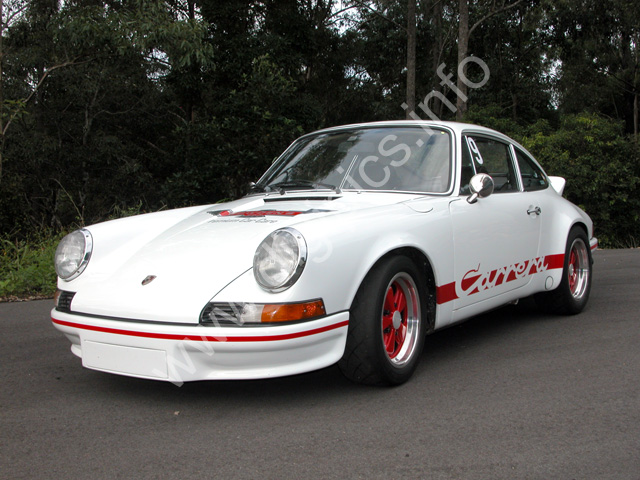
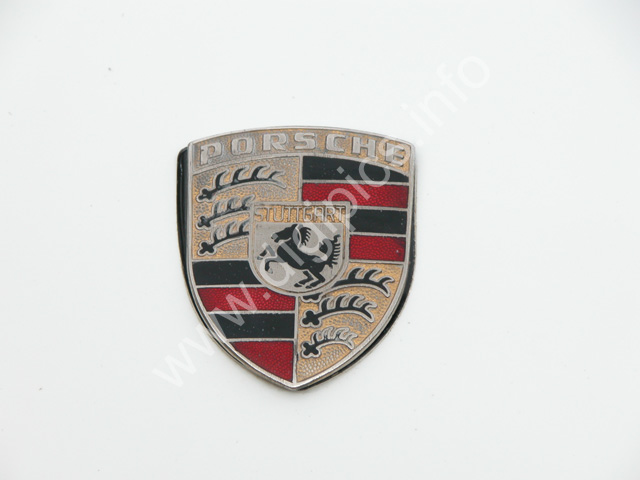
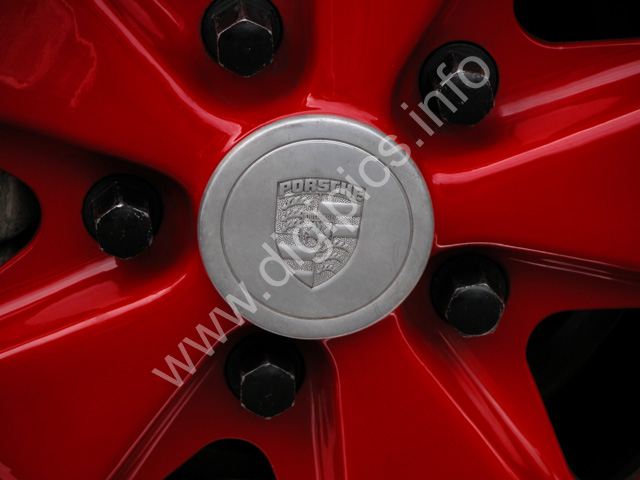
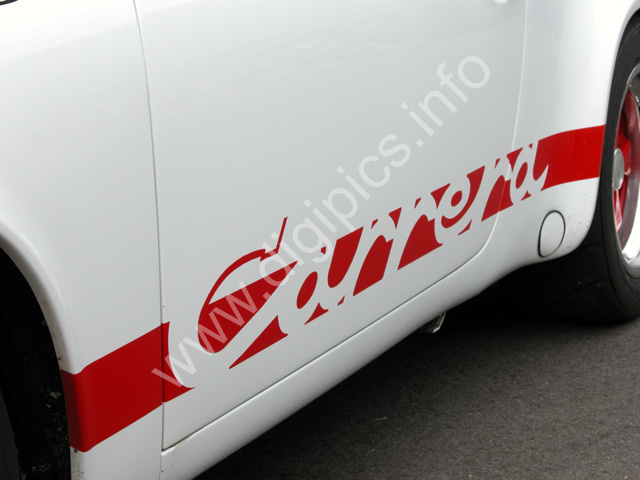

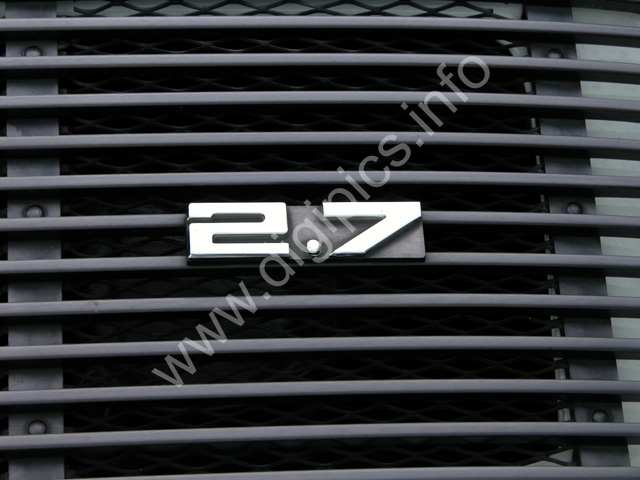
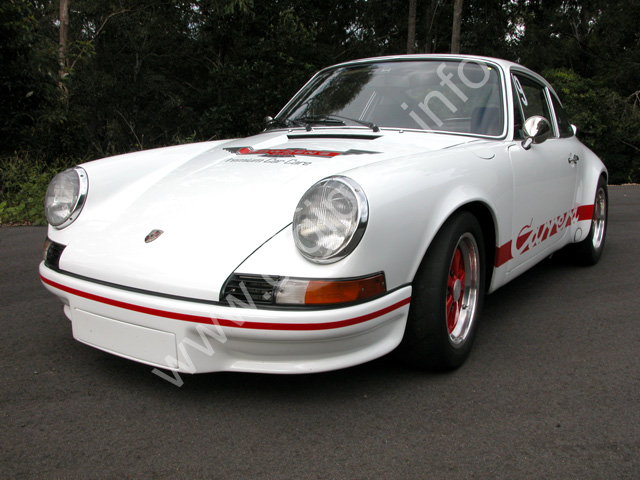
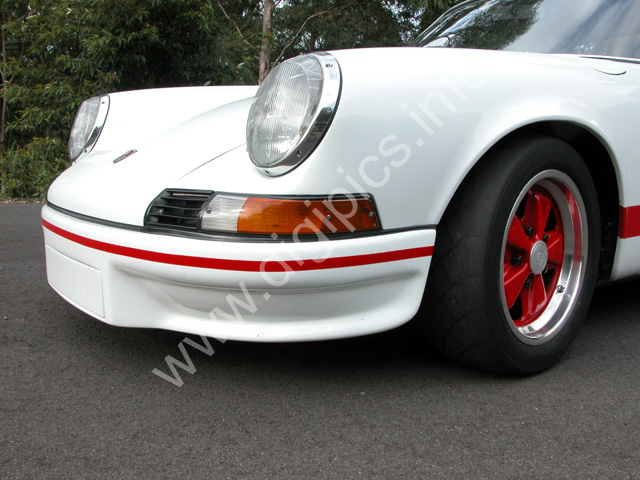
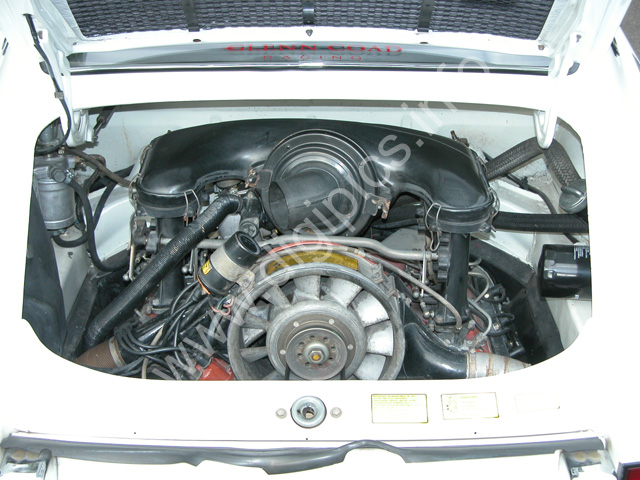
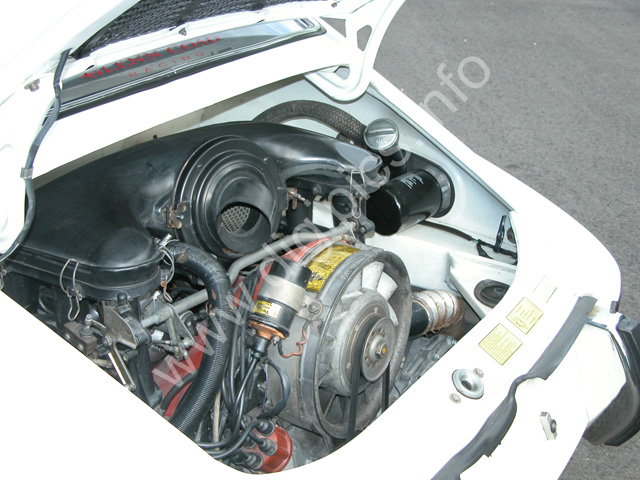
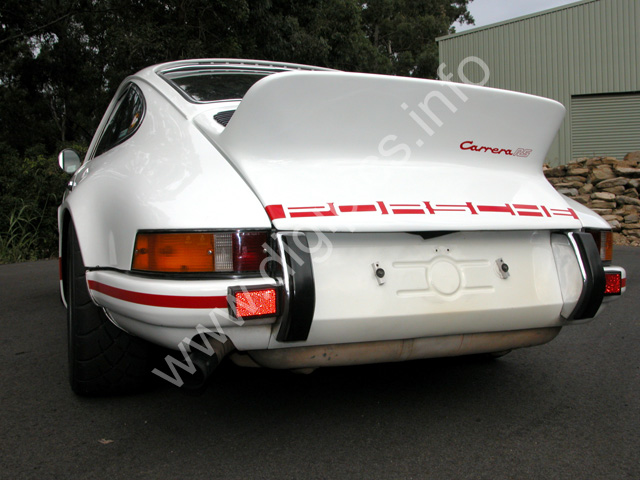
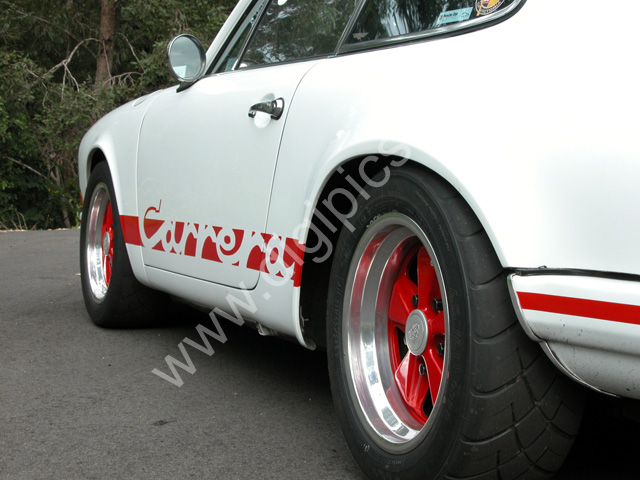
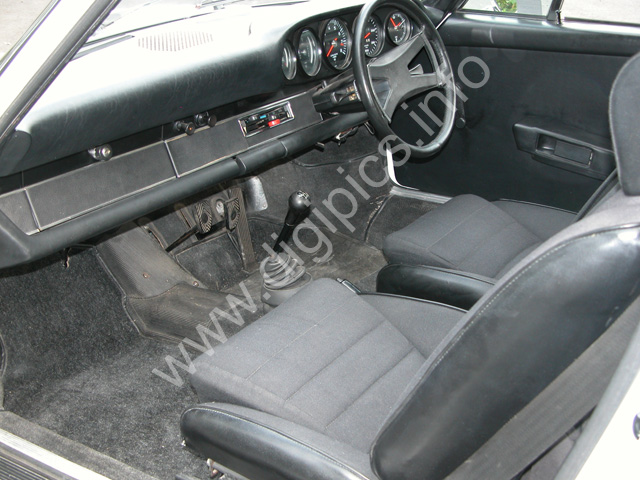
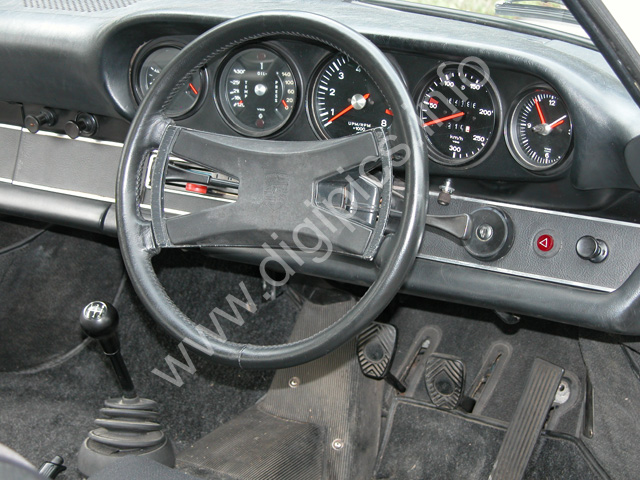
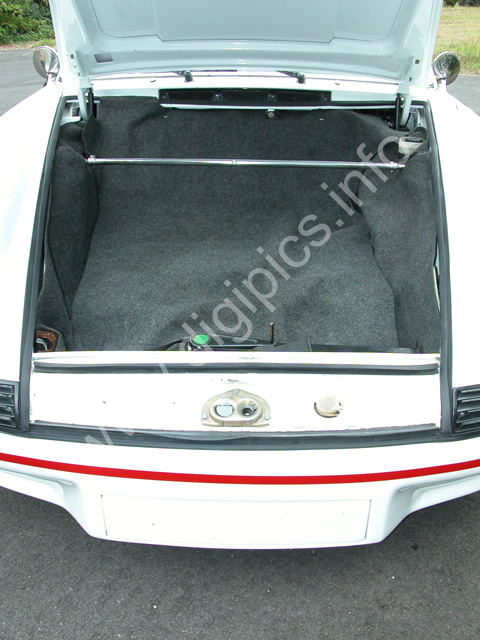
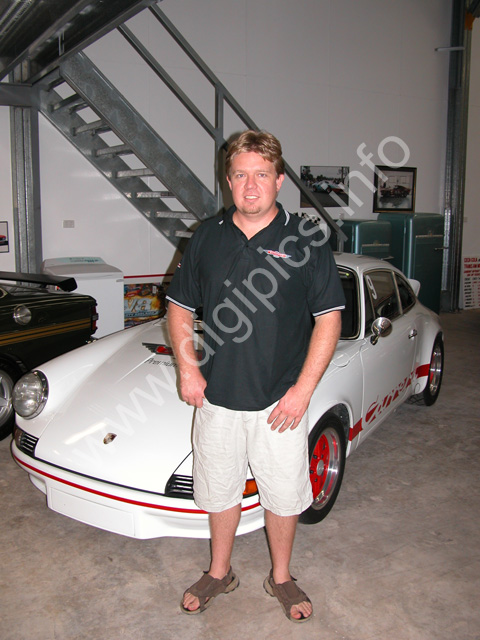
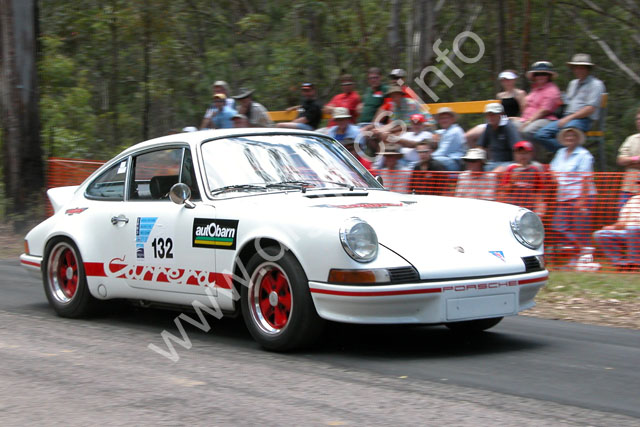
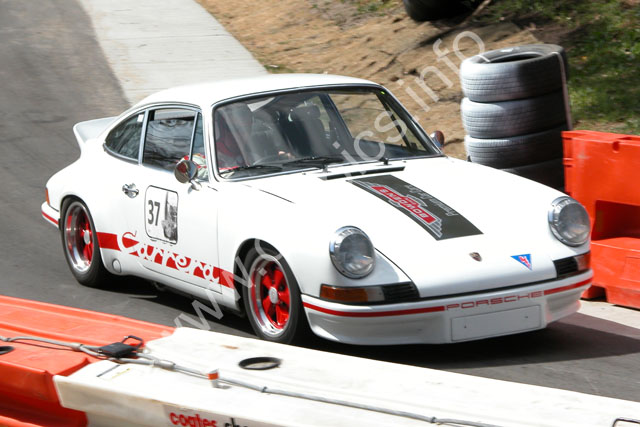
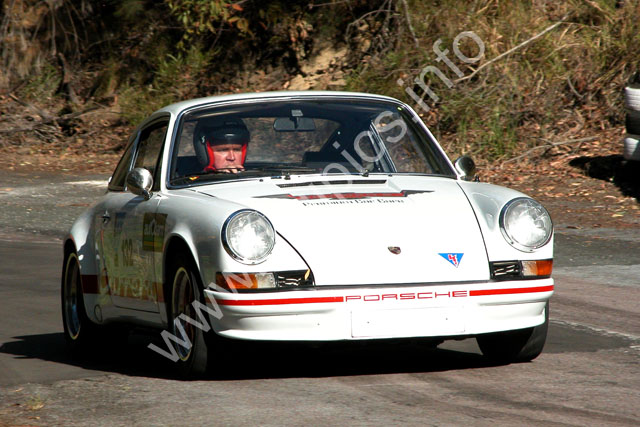
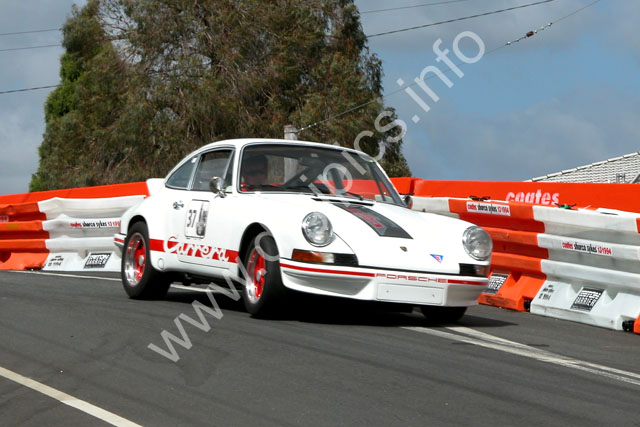
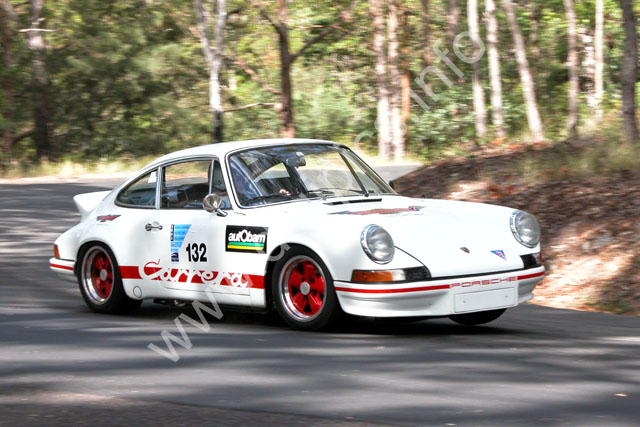
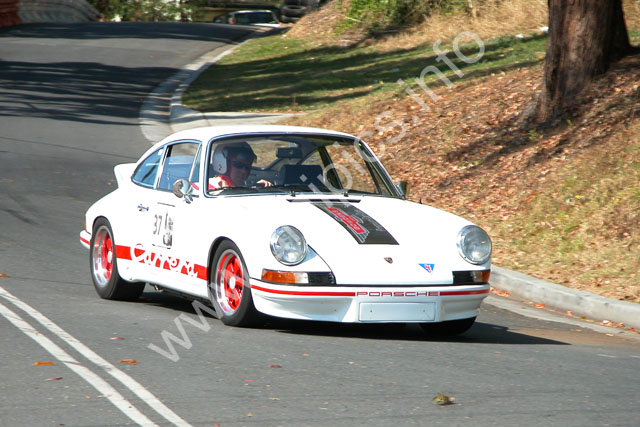
Porsche Carrera RS 2.7… One of the best driver’s cars ever built.
To try to promote their everyday products, motor manufacturers have over the years, often turned to motor racing to showcase the quality of the cars they produce. Whilst some have used their base models for this purpose, others developed high performance homologation specials specifically aimed at success in a particular high-profile class. In Australia, cars like the Cortina GT 500 and Falcon GTHO are well known examples of homologation specials, that were not only successful in racing, but due to the limited numbers built, have subsequently become highly collectable by enthusiasts.
In 1972, Porsche determined that FIA GT competition would be a good arena to promote their unique 911 style of vehicles, which although only first appearing at the Frankfurt Motor Show in 1963 and commencing production in 1964, were considered at the time to be starting to show their age a little. Initially, Porsche decided on the Group 4 GT class as being suitable for the purpose – a class that required a minimum of 500 similar vehicles to be built. To this end, the Porsche engineers designed the 911 Carrera RS 2.7 – a road car with racing strictly in mind and one that provided a tremendous basis for the cars they would actually use to contest the championship.
Although construction of the first batch of cars started in April 1972, the car wasn’t officially introduced to the general public until the 1972 Paris Salon in October, where it received lots of favourable attention. In the beginning, there was also some concern within Porsche that there may not be sufficient demand for such a vehicle and so the price was not set too high. However, the revival of the Carrera name – designed to bring forth memories of past achievements in the great Carrera Panamericana road races – helped to arouse even more excitement. Advertised as ”Germany’s fastest car” the Carrera RS certainly looked the part, with front and rear spoilers and wild Carrera scripts down each side. Porsche also tried pushing the exclusivity angle by stating, ”Only 500 men will drive it”, although in the end, this wasn’t quite how things worked out.
Those in the know obviously knew a good thing when they saw it and as such, overall demand for the first RS-badged Porsche was so high, that within a month, all of those “500” cars – required for homologation – had been sold and a second batch of cars commenced. This second batch of cars was also quickly snapped up, allowing for a third run of cars to be constructed. By the end of production in July 1973, some 1580 had been built, thereby enabling the RS to be reclassified for Group 3 series-production GT - which required 1000 units to be built.
Technically, there were four variations of the Carrera RS 2.7;
· the RS “H” – with the “H” referring to the initial batch of 17 homologation vehicles;
· the RS “Sport” (M 471 code) – which had the minimal trim specification (200 built);
· the RS “Touring” (M 472 code) – which had higher 911S type trim level specified (1308 built);
· the RSR 2.8 (M 491 code) – built specifically for Group 4 “Appendix J” competition (55 built).
Following the success of the Carrera RS 2.7, in 1974 Porsche decided to go one better and produced the Carrera RS 3.0 and RSR 3.0 of which just 109 were built. With larger and more powerful engines, wider wheel arch flares, wider wheels and tyres, brakes from the Porsche 917 Le Mans racers, less weight (900 kg) and larger front and rear spoilers, these were probably the ultimate in road legal high-performance Porsche machinery.
Designed for racing, the Carrera RS Porsches were predictably dominant and always the ones to beat wherever they competed – so much so that Porsche were able to achieve three international and seven national championships in the car’s first race season.
So what is it about the Carrera RS, that makes them so special???
Prior to the Carrera RS 2.7, the quickest Porsche available was the 911S, powered by a 2.4 litre engine producing 190 bhp. By using nickel-silicon carbide plating for the aluminium cylinders, Porsche were able to increase the bore from 84 to 90 mm to come up with a capacity increase of around 300cc, to approx 2.7 litres and with other modifications, were able to increase power to 210 bhp.
In addition to the increase in performance, the car went on a major diet to lose a few unnecessary kilos and thereby making it a lean, mean, racing machine. To achieve this, Porsche used thinner sheet steel for the front and rear wings, bonnet and roof (0.7mm thick instead of 1.0 – 1.25mm thick), as well as fibreglass for the front bumpers (with integrated air dam and provision for a supplementary oil cooler) and the bootlid (with “duck’s tail” spoiler). In addition to this, Porsche used special light weight seats, reduced the amount of sound deadening, removed trim items and even had Belgian company Glaverbel provide lightweight safety glass to replace the standard windows.
To make the most of all these improvements, Porsche also worked on improving the car’s handling, by increased the width of the standard Fuchs forged alloy wheels to 6x15” front and 7x15” rears, reinforced the suspension, included special shock absorbers, bigger anti-sway bar and a front strut brace. With all these changes, the Carrera RS could outperform most of the high performance models from the other European manufacturers.
However, it should be noted that as Porsche didn’t expect the car to be the sales success it was, the factory quickly started to run out of the lightweight materials used in RS construction, which meant that around the last 300 cars were built using some (if not all) normal-weight body parts.
The car featured on these pages, belongs to the Bowden family and works in well with their competition oriented car collection. The car is actually one of that first batch of 500 cars built and includes all the special features of this type of vehicle (ie: lightweight steel panels, thinner glass… even little things like one horn fitted instead of the normal two). Production records show that it is the 335th RS built, and is also one of the few factory RHD models produced for export markets.
The car was originally shipped new into Australia on the 3rd of March 1973, and has the honour of being the first of just four Carrera RS 2.7s (all RHD) and three Carrera RSRs (all LHD) brought into the country by Alan Hamilton’s Porsche Cars Australia – the local Porsche distributor. As for the cost of Carrera ownership – prices started at A$17,000 for the RS and A$22,500 for the RSR. To put these figures into perspective in relation to other performance cars on offer, the Porsche 911 S was just A$15,129, the Ferrari Dino a snip at A$16,000, the Jaguar E-Type V12 Roadster a mere A$10,622, whilst the new XAGT Hardtop was a miniscule A$4,955.
Although being one of the M 472 Touring models, this particular car was ordered with the special lightweight sports seats and the optional 7x15” front and 8x15” rear alloy wheels to make it just that little bit more sporting – as if that was really necessary. First owner was John Dawson-Damer, the well known English Lord and performance car enthusiast, who in later years put together his own fantastic collection of Lotus formula cars, but who died a couple of years ago in a tragic crash at the Goodwood hill climb. Having only used the RS on the road for a couple of years, he traded it back to Alan Hamilton.
Since that time, the car has been owned by sports car dealer Jeff Dutton at least four times, and at one stage, he actually converted the body to that of a 1974 Carrera RS 3.0; including the much larger flares and rear wing. Eventually the car was sold to Brian Power in the late eighties, who decided that the best thing to do would be to convert it back to its complete original configuration.
Then in 2000, the car again came up for sale and so the opportunity was taken to add the car to the growing Bowden collection. However, rather than just sit around gathering dust like a static museum piece, Dan “Gurney” Bowden takes every opportunity to enter the Porsche in local competitive events and show the public what makes this car so special. Having seen first hand how hard Dan competes in Porsche Club sprints, historic hill climbs and other specially selected speed trials – like Speed on Tweed – I can assure you that this car is definitely being used in the manner for which it’s maker intended. And when this Porsche is on the track everyone knows about it, as the sound it makes as the revs rise and fall is simply sensational… just what you would expect of such a thoroughbred.
To highlight the car’s competitive nature, at the Speed on Tweed even last year, Dan scorched around the very tight and demanding Murwillumbah street circuit to be the 3rd fastest road car in the event, and 12th outright. Quite an achievement, considering some of the specialised machinery that attended. Even in the Porsche club sprints Dan and the RS regularly beat many modern GT-3 and turbo Porsches – which again goes to show how potent these “standard” road car's actually were.
As can be expected, today these cars are highly prized by car collectors and only change hands for substantial sums of money. However it is good to see that some people aren’t afraid to give these precious vehicles the spirited exercise they need… and because of this the historic racing community is all the richer for being given the opportunity to experience it.
|
Technical Data |
|
Chassis |
self-supporting bodywork with front independent suspension on transverse links and damper struts, longitudinal torsion bars, stabilisers, rear independent suspension on lateral links and transverse torsion bars |
|
Engine |
911/83 B6 (six-cylinder Boxer), air-cooled, single overhead camshaft per bank, two valves per cylinder |
|
Power |
210 bhp DIN (154 kW) @ 6300 rpm |
|
Torque |
218 ft/lb @ 5100 rpm |
|
Capacity |
2687cc (bore and stroke of 90mm x 70.4mm) |
|
Fuel System |
Bosch mechanical fuel injection, tank capacity 85 litres |
|
Transmission |
five speed gearbox |
|
Length |
163.9 in (4,102 mm) |
|
Width |
63.4 in (1,652 mm) |
|
Height |
52 in (1,320 mm) |
|
Wheel Base |
89.4 in (2,271 mm) |
|
Weight |
“H” – 960 kg, Sport – 975kg, Touring – 1075kg, RSR – 900kg |
|
Top Speed |
150 mph (245 kph) est. |
|
|
|
 |
 |
 |
 |
 |
 |
 |
 |
 |
 |
 |
 |
 |
 |
 |
 |
 |
 |
 |
 |
 |
 |
This page is under construction... Please return soon to see updates!!!